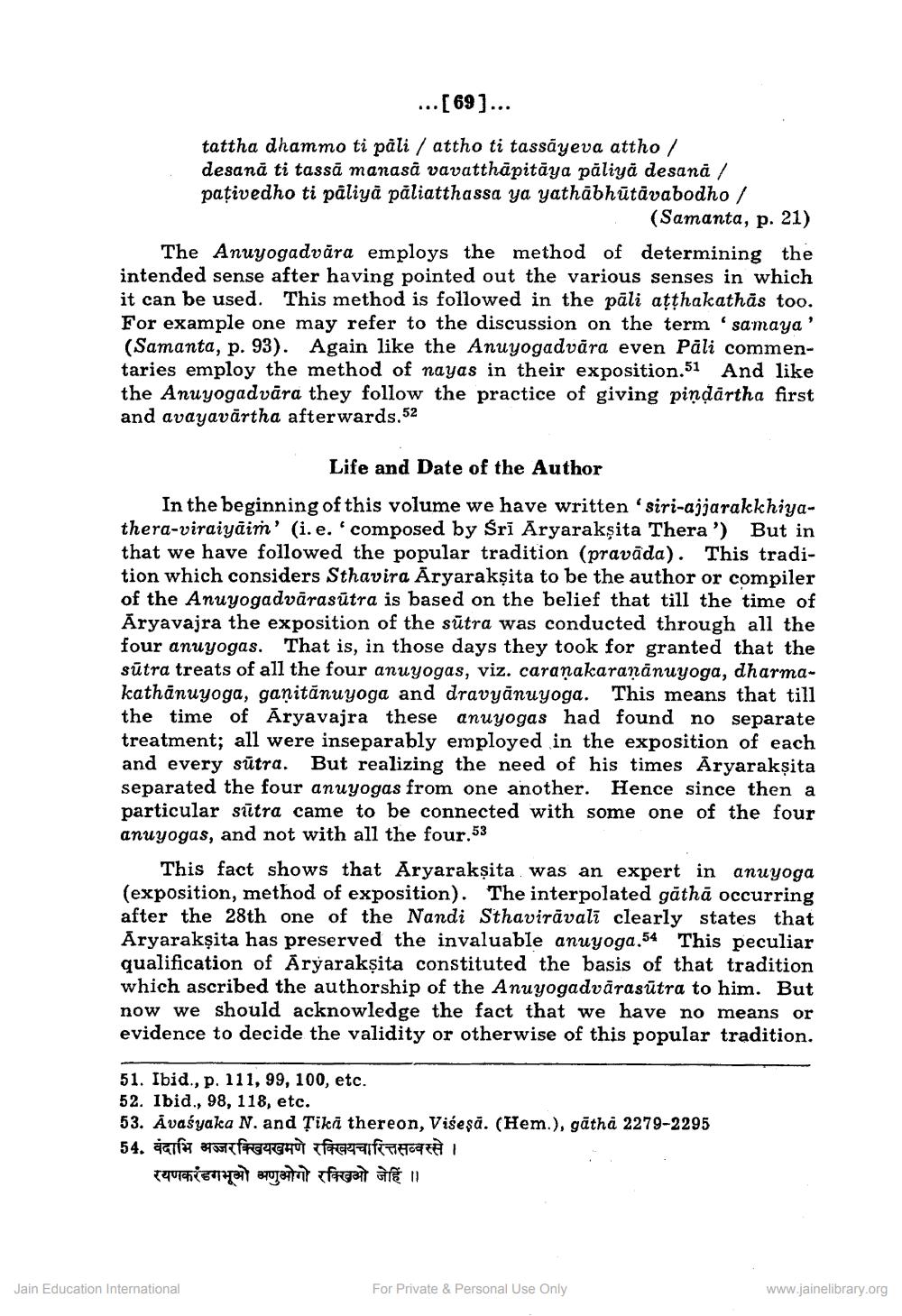________________
...[69]...
tattha dhammo ti pali / attho ti tassayeva attho/ desană ti tassā manasä vavatthäpitāya paliya desană / paṭivedho ti paliyā pāliatthassa ya yathābhūtāvabodho / (Samanta, p. 21)
The Anuyogadvāra employs the method of determining the intended sense after having pointed out the various senses in which it can be used. This method is followed in the pali aṭṭhakathas too. For example one may refer to the discussion on the term 'samaya (Samanta, p. 93). Again like the Anuyogadvāra even Pāli commentaries employ the method of nayas in their exposition.51 And like the Anuyogadvāra they follow the practice of giving pinḍārtha first and avayavartha afterwards.52
Life and Date of the Author
In the beginning of this volume we have written 'siri-ajjarakkhiyathera-viraiyaim' (i. e. ' composed by Śrī Aryarakṣita Thera ') But in that we have followed the popular tradition (pravāda). This tradition which considers Sthavira Aryarakṣita to be the author or compiler of the Anuyogadvārasūtra is based on the belief that till the time of Aryavajra the exposition of the sutra was conducted through all the four anuyogas. That is, in those days they took for granted that the sūtra treats of all the four anuyogas, viz. caraṇakaraṇānuyoga, dharmakathānuyoga, gaṇitānuyoga and dravyānuyoga. This means that till the time of Aryavajra these anuyogas had found no separate treatment; all were inseparably employed in the exposition of each and every sutra. But realizing the need of his times Āryarakṣita separated the four anuyogas from one another. Hence since then a particular sutra came to be connected with some one of the four anuyogas, and not with all the four.53
This fact shows that Aryarakṣita was an expert in anuyoga (exposition, method of exposition). The interpolated gathā occurring after the 28th one of the Nandi Sthaviravali clearly states that Aryarakṣita has preserved the invaluable anuyoga.54 This peculiar qualification of Aryarakṣita constituted the basis of that tradition which ascribed the authorship of the Anuyogadvarasutra to him. But now we should acknowledge the fact that we have no means or evidence to decide the validity or otherwise of this popular tradition.
51. Ibid., p. 111, 99, 100, etc.
52. Ibid., 98, 118, etc.
53. Avaśyaka N. and Tika thereon, Viseşă. (Hem.), gāthā 2279-2295 54. वंदाभि अज्जरक्खियखमणे रक्खियचारित्तसव्वरसे ।
रयणकरंगभूओ अणुओगो रक्खिओ जेहिं ||
Jain Education International
+
For Private & Personal Use Only
www.jainelibrary.org




